Cryogenic cooling systems produce the highest quality scientific images by reducing thermal noise to minimal levels, achieving sensitivity of 20mK versus uncooled cameras’ 50mK. While these systems require maintenance after 10,000-13,000 hours, they’re essential for astronomy and advanced research. Peltier cooling offers a practical alternative for everyday scientific imaging at -20°C to -40°C. Your specific application—whether microscopy, medical imaging, or astrophotography—will determine which cooling technology delivers your best results.
What Camera Cooling Systems Capture Best Scientific Images?
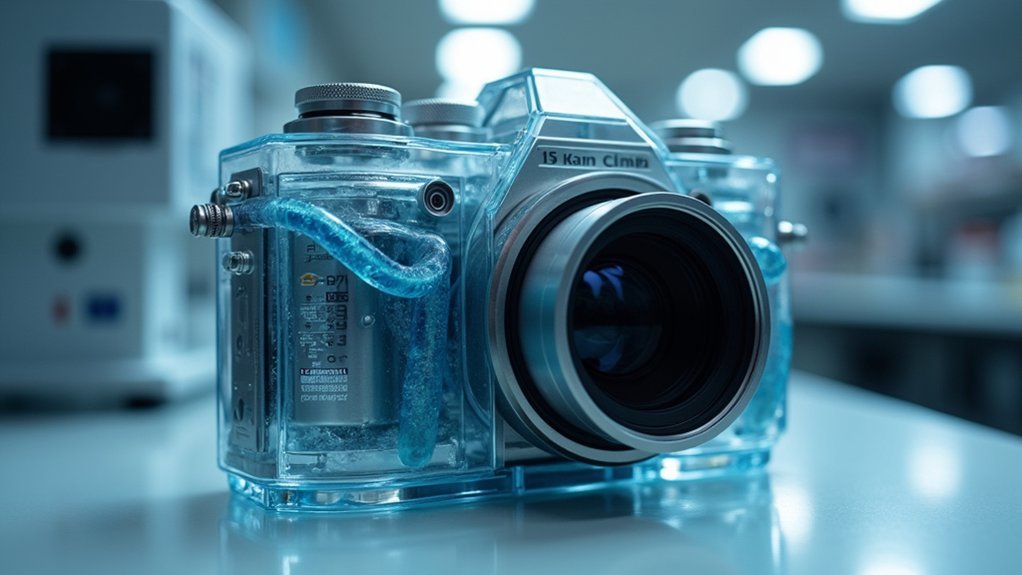
While standard cameras suffice for everyday photography, scientific imaging demands exceptional performance that only properly cooled systems can deliver.
Scientific imaging requires cooled systems that outperform conventional cameras in every measurable dimension.
Cooled cameras achieve remarkable sensitivity (20mK compared to uncooled systems’ 50mK), allowing you to detect minute temperature differences that would otherwise remain invisible.
When you’re conducting semiconductor inspections or analyzing combustion processes, integrated cooling technology rapidly stabilizes temperatures and minimizes noise—critical for capturing high-quality data.
For low-light applications, cooled sCMOS cameras like the pco.edge series reduce dark current, enabling longer exposures without quality degradation.
You’ll find thermal imaging cameras like the FLIR A6780 particularly valuable for dynamic experiments, as they combine cooling systems with high-speed capture rates to document rapid thermal events with precision, while spectral filtering reveals otherwise hidden details.
The Science Behind Camera Sensor Cooling Technology
You’ll find that thermal noise mechanics directly impact sensor performance by introducing random signal variations that obscure faint details in scientific imagery.
Modern cryocooler technology has evolved to achieve sub-20mK sensitivity levels through multi-stage cooling systems that precisely control sensor temperatures.
These advancements don’t just reduce dark current—they fundamentally transform what you can capture by enabling longer exposures and revealing spectral details invisible to conventional cameras.
Understanding Thermal Noise Mechanics
At the heart of camera sensor cooling technology lies the battle against thermal noise, an invisible adversary that degrades image quality. When your sensor heats up, especially during long exposures or in warm environments, this thermal noise manifests as random signal variations that obscure genuine details in your images.
A cooled camera system combats this phenomenon through precise temperature management, achieving improvements that transform scientific imaging capabilities:
- Reducing sensor temperature to cryogenic levels pushes thermal noise below the threshold of detectable signals.
- Enhancing sensitivity from 50mK (uncooled) to approximately 20mK (cooled), revealing subtler temperature variations.
- Minimizing pixel drift by maintaining consistent sensor temperature, ensuring reliable data acquisition.
You’ll notice dramatically improved clarity in low-light conditions when thermal noise no longer masks the details you’re trying to capture.
Cryocooler Technology Advancements
Since the development of advanced imaging systems, cryocooler technology has revolutionized camera sensor cooling with remarkable efficiency and precision.
These mechanical refrigeration systems drive sensors to cryogenic temperatures, dramatically reducing thermal noise that otherwise degrades image quality.
The impact on performance is substantial—cooled thermal cameras achieve sensitivity of 20mK compared to uncooled systems’ 50mK.
This high sensitivity enables detection of minute temperature differences and rapid thermal events with exceptional clarity.
Modern cryocoolers feature more compact, efficient designs that integrate seamlessly into scientific and industrial imaging systems.
However, they typically require rebuilding after 10,000-13,000 hours of operation to maintain ideal cooling performance.
Despite this maintenance requirement, the superior image quality they deliver makes them indispensable for applications where detecting the smallest thermal variations is critical.
Thermal Noise Reduction: How Cooling Impacts Image Quality
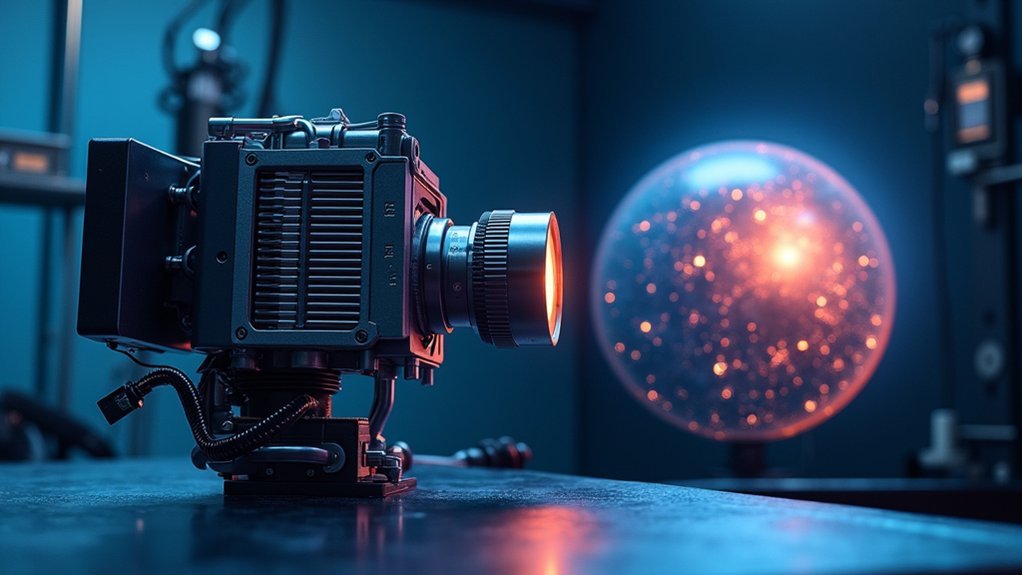
While standard cameras struggle with thermal noise, cooling systems fundamentally transform image quality by addressing this persistent challenge.
When you use cooled cameras, you’ll immediately notice superior sensitivity—detecting temperature differences as low as 20mK compared to uncooled systems’ 50mK threshold.
Cooling systems deliver three critical advantages:
- Minimized thermally-induced noise, resulting in clearer images even in low-light conditions
- Reduced dark current in sCMOS sensors, essential for precision applications in biomedical imaging
- Enhanced thermal stability allowing for longer exposure times without significant noise degradation
You’ll find cooled cameras maintain reliable performance even in challenging high-heat environments where thermal pixel drift would typically compromise standard systems.
This consistency is why scientists consistently choose cooling technology for their most demanding imaging applications.
Comparing Peltier vs. Cryogenic Cooling Methods
When selecting a camera cooling system, you’ll need to choose between Peltier and cryogenic technologies, each offering distinct performance profiles for different imaging scenarios.
Peltier systems maintain sensors at -20°C to -40°C, providing moderate thermal noise reduction in a compact, maintenance-free package ideal for many scientific research applications.
Peltier cooling delivers practical -20°C to -40°C performance with hassle-free operation for everyday scientific imaging needs.
For extremely demanding low-light imaging, cryogenic cooling achieves temperatures as low as -200°C, dramatically outperforming both cooled and uncooled Peltier alternatives.
This superior cooling translates to exceptional sensitivity but comes with increased complexity and maintenance requirements after 10,000-13,000 operational hours.
Your choice ultimately depends on balancing performance needs against practical considerations.
Peltier systems offer simplicity and reliability for standard laboratory work, while cryogenic solutions deliver unmatched sensitivity for specialized applications requiring ultimate noise reduction.
Optimal Cooling Temperatures for Different Scientific Applications
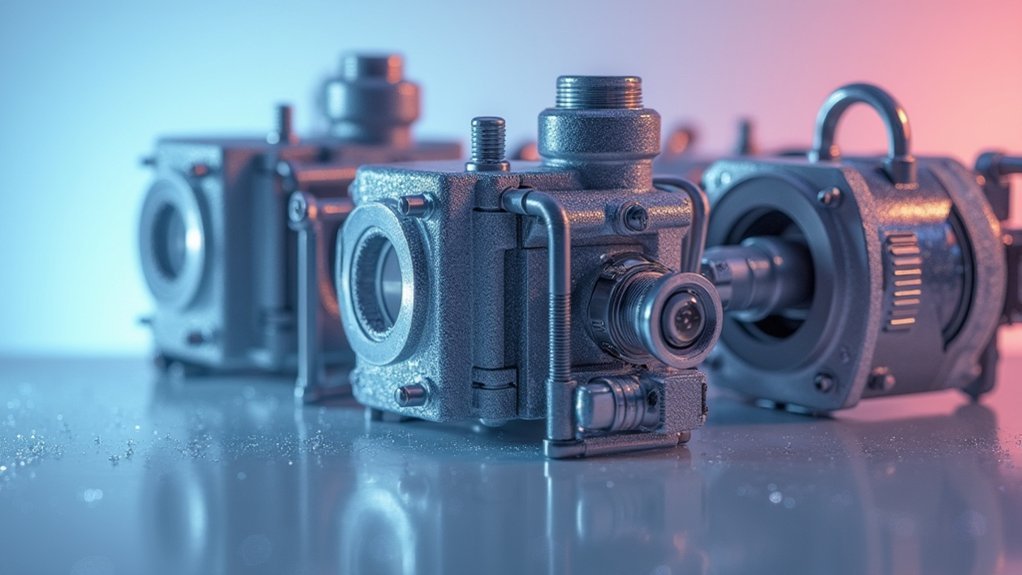
Different scientific applications require specific cooling temperature ranges to maximize camera performance and data quality.
In astronomy imaging, you’ll need cryogenic temperatures around -196°C to minimize thermal noise when capturing faint celestial objects.
Meanwhile, medical imaging typically operates at milder cooling thresholds between -20°C and -40°C to balance sensitivity with practical clinical use.
For microscopy applications, maintaining stable temperatures between -20°C to 25°C (depending on the specific technique) helps you achieve the ideal balance between image resolution, exposure flexibility, and operational stability.
Astronomy Imaging Requirements
Why do professional astronomers invest so heavily in advanced cooling systems for their cameras? When you’re capturing faint celestial objects, thermal noise becomes your greatest enemy. Cooled cameras operating between -20°C and -40°C dramatically reduce dark current, enabling the crisp, detailed images astronomers require.
In astronomy imaging, cooling systems deliver three critical advantages:
- Extended exposure capabilities – cooled sCMOS sensors allow longer integration times without noise degradation
- Enhanced sensitivity – thermal imaging at 20mK sensitivity reveals subtle temperature variations in astronomical phenomena
- Consistent data collection – stable sensor temperatures guarantee reliable spectroscopy and photometry measurements
With modern integrated cooling systems stabilizing temperatures within minutes, you’ll spend less time waiting and more time capturing the universe’s most elusive objects.
Medical Imaging Thresholds
Although consumer cameras rarely require cooling, medical imaging applications demand precise temperature control to achieve diagnostic-quality images.
When you’re capturing fluorescence microscopy or conducting tissue diagnostics, cooled cameras provide the sensitivity needed for accurate results.
For ideal performance in biomedical thermal imaging, aim to maintain sensor temperatures below -30°C to achieve sensitivity around 20mK—essential for detecting subtle tissue temperature variations. This cooling threshold helps you capture the minute differences vital for proper diagnosis.
Live cell imaging benefits from camera temperatures below -20°C, allowing longer exposures while preserving image integrity.
Even in surgical environments where ambient temperatures reach 65°C, integrated cooling systems maintain the thermal stability required for high-precision imaging with minimal noise interference and motion artifacts.
Microscopy Temperature Ranges
Beyond medical imaging, microscopy applications require specific cooling parameters tailored to experimental needs.
When you’re capturing microscopic details, cooled cameras with precisely controlled sensor temperature become critical for achieving clear, artifact-free images.
The preferred cooling range typically falls between 0°C and 20°C, with specific benefits at different points:
- 4°C cooling – Ideal for biological samples, preserving live cells while minimizing thermal artifacts in your imaging data.
- Lower temperatures (0-5°C) – Best for fluorescence microscopy, reducing background noise and enhancing dynamic range.
- Stable cooling – Essential for extended exposure times, as integrated cooling technology stabilizes sensor temperature within minutes.
Long Exposure Performance: Cooled vs. Uncooled Camera Systems
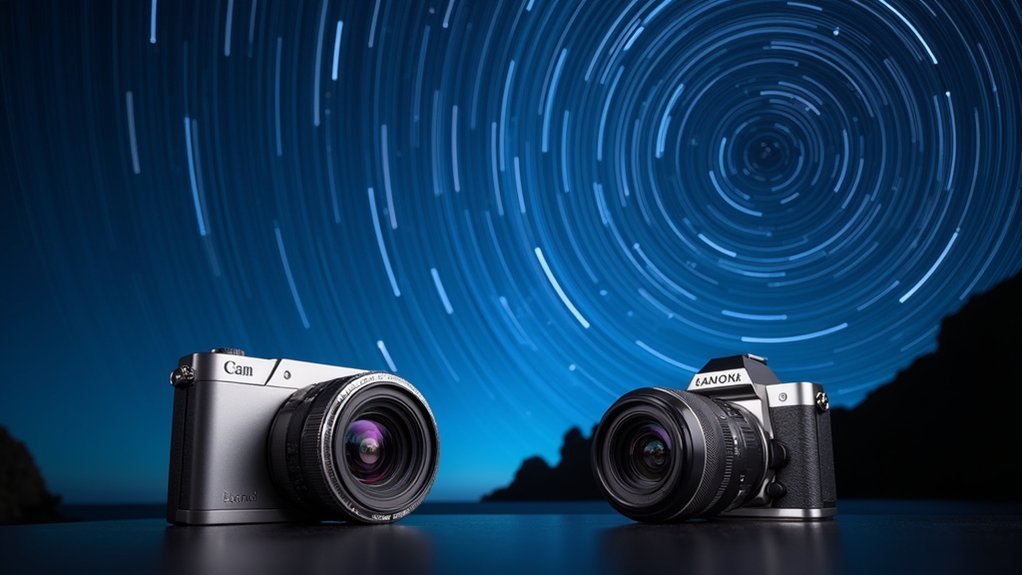
When capturing long exposure images, the difference between cooled and uncooled camera systems becomes strikingly apparent. Cooled cameras minimize dark current, allowing you to extend exposure times without introducing excessive noise—crucial when capturing faint astronomical or scientific details.
| Feature | Cooled Cameras | Uncooled Cameras |
|---|---|---|
| Sensitivity | As low as 20mK | Limited to 50mK |
| Thermal Noise | Minimal | Significant |
| Dynamic Range | High | Moderate |
| Detail Retention | Excellent | Poor in long exposures |
You’ll find integrated cooling systems maintain consistent sensor temperatures, preventing thermal pixel drift that degrades image quality. While uncooled cameras offer portability advantages, they simply can’t match cooled systems for long exposure performance where thermal noise would otherwise obscure critical scientific details.
Integration Time Benefits in Microscope Imaging With Cooled Sensors
The benefits of cooled sensors extend far beyond astronomy into the domain of microscope imaging, where precise visualization of minute details can make all the difference in research outcomes.
Cooled sensors revolutionize microscope imaging, allowing researchers to visualize crucial minute details for breakthrough discoveries.
When you’re working with cooled cameras, you’ll notice a significant enhancement in your capacity to capture high-quality images even in challenging conditions.
- You’ll achieve longer integration times without sacrificing image clarity, as cooled sensors dramatically reduce dark current noise that typically accumulates during extended exposures.
- You can detect fainter signals and subtle features in your samples due to the improved sensitivity at lower temperatures.
- You’ll experience better contrast and dynamic range, allowing you to distinguish fine structures within complex specimens that would otherwise be lost in thermal noise.
Cost-Benefit Analysis of Cooling Systems for Research Laboratories
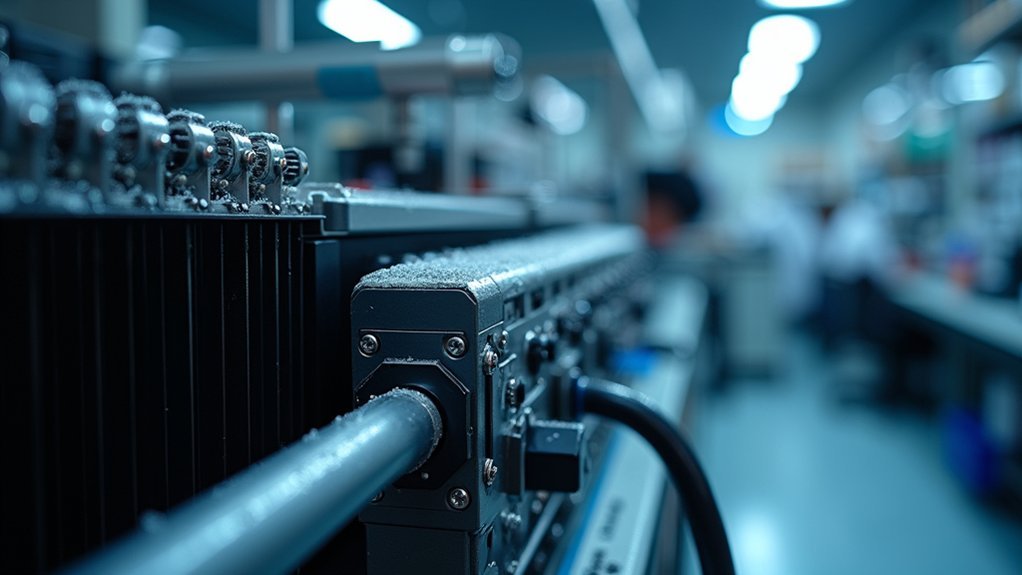
Although investing in advanced camera cooling systems represents a significant upfront cost for research laboratories, the long-term scientific and operational benefits often justify this expenditure.
Cooled cameras deliver superior image quality by reducing thermal noise, which is essential when you’re capturing precise measurements in applications like semiconductor production.
While these systems typically cost more than uncooled alternatives, they provide exceptional sensitivity—detecting temperature differences as small as 20mK—that directly improves data accuracy.
You’ll also benefit from increased laboratory efficiency, as integrated cooling solutions using compressed air or liquid substantially reduce waiting times during data acquisition.
Despite maintenance requirements (cryocooler rebuilds after 10,000-13,000 operational hours), the enhanced thermal stability and improved dynamic range of your images will deliver consistent results even in high-heat environments.
Maintenance Requirements for Different Cooling Technologies
When handling liquid nitrogen for your camera cooling system, you’ll need to follow strict safety protocols including wearing cryogenic gloves and ensuring proper ventilation to prevent asphyxiation hazards.
TEC (thermoelectric cooling) systems require regular cleaning to remove dust and debris that can impede heat dissipation and reduce cooling efficiency.
You should also inspect electrical connections on your TEC systems quarterly, as corrosion or loose wiring can lead to performance degradation or complete system failure.
Liquid Nitrogen Handling
Maintaining proper procedures for liquid nitrogen handling represents one of the most critical aspects of camera cooling system maintenance. When working with liquid nitrogen-cooled thermal imaging systems, you’ll need to establish regular monitoring schedules to guarantee ideal temperature maintenance as nitrogen evaporates over time.
For safe and effective management:
- Always wear appropriate PPE including insulated gloves, face shields, and protective clothing to prevent frostbite when handling liquid nitrogen.
- Check insulation integrity regularly to minimize evaporation rates and maintain consistent cooling performance.
- Conduct routine inspections of transfer lines and connections to identify potential leaks that could compromise imaging quality.
Proper training in emergency response procedures is essential for your team, especially regarding nitrogen spills in confined spaces where asphyxiation risks exist.
TEC System Cleaning
Despite their simplicity compared to liquid-based systems, TEC (Thermoelectric Cooler) cooling systems require regular maintenance to deliver peak imaging performance.
You’ll need to regularly clean heat sinks and fans to prevent dust accumulation that impedes cooling efficiency.
Inspect electrical connections during maintenance and verify that thermal interface materials remain properly applied to maintain effective heat transfer.
While cooled TEC systems have fewer moving parts than traditional cooling methods, they still need routine checks to guarantee they operate within the ideal 20-25°C range for sensor performance.
Monitor ambient temperature around your TEC system, as elevated environmental conditions can reduce cooling effectiveness and increase maintenance frequency.
Environmental Considerations When Operating Cooled Camera Systems
The environmental conditions surrounding your cooled camera system can dramatically influence its performance and longevity. High temperatures of 48-50°C can seriously compromise cooled cameras, potentially causing overheating issues that degrade image quality during scientific observations.
To optimize performance in challenging environments:
- Monitor temperature continuously – Track your camera’s operating temperature to prevent overheating and maintain consistent imaging quality.
- Implement additional cooling solutions – Utilize fan-cooled systems or heat sinks when ambient temperatures rise to critical levels.
- Position strategically – Set up your imaging equipment in shaded locations whenever possible to reduce direct heat exposure.
Remember that proper environmental management will extend your camera’s operational life while ensuring you capture the highest quality scientific images possible.
Real-World Performance: Case Studies in Microscopy Imaging
While theoretical specifications provide valuable guidance, examining real-world applications reveals the true impact of cooled camera systems in microscopy. Researchers using pco.edge cooled scientific cameras consistently report superior results when imaging live cells, capturing subtle fluorescence signals that would otherwise be lost in noise.
In one biomedical research case, scientists tracked rapid cellular responses by leveraging high frame rates while maintaining excellent signal-to-noise ratios—something uncooled alternatives couldn’t achieve.
The temperature stability of these cooling systems proved particularly valuable in a materials science laboratory where ambient conditions fluctuated throughout lengthy experiments.
What’s most compelling is how cooled cameras enable extended exposure times without introducing dark current noise, allowing you to document sensitive cellular dynamics with remarkable clarity and consistency across multiple imaging sessions.
Selecting the Right Cooling System for Your Research Requirements
Building on these real-world successes, you’ll need to match your cooling system to your specific research demands for ideal performance.
Cooled scientific cameras offer significant advantages when thermal stability is paramount, especially in high-precision applications with nanometer-range tolerances.
When selecting your cooling system, consider:
- Temperature sensitivity requirements – If you need to detect minute temperature differences below 50mK, choose systems offering sensitivity as low as 20mK.
- Environmental conditions – For ambient temperatures up to 65°C, look for compressed air or liquid cooling systems that minimize thermal pixel drift.
- Stabilization speed – Select integrated cooling technology that reaches peak temperature within minutes if rapid imaging startup is critical for your research.
Your application’s precision requirements should ultimately drive your cooling system selection.
Frequently Asked Questions
What Cameras Do Scientists Use?
You’ll find scientists using cooled sCMOS cameras like pco.edge, high-resolution models such as FLIR X8580-HS, and thermal cameras like FLIR A6700. They’re choosing equipment based on sensitivity, resolution, and specific research requirements.
What Is the Most Advanced Thermal Camera?
The FLIR X8580-HS is currently the most advanced thermal camera you’ll find. It offers 1280×1024 HD resolution with cooled InSb technology, delivering exceptional sensitivity and high-speed imaging at up to 520 fps.
What Is Better Than Thermal Imaging?
Hyperspectral imaging, electron microscopy, fluorescence microscopy, X-ray CT, and MRI surpass thermal imaging. You’ll get better chemical analysis, nanoscale resolution, cellular visualization, internal structure imaging, and soft tissue contrast with these alternatives.
What Is the Difference Between FLIR and Thermal Imaging?
FLIR is a brand that manufactures thermal imaging cameras. When you’re comparing them, remember that FLIR isn’t an alternative technology—it’s a company that makes high-quality thermal imaging equipment with advanced features and specifications.
Is FLIR Better Than Night Vision?
Yes, FLIR is better than night vision when you need to detect heat signatures. You’ll see thermal differences in complete darkness, while night vision only amplifies existing light and can’t show temperature variations.
In Summary
You’ll achieve the best scientific imaging results by matching your cooling system to your specific research needs. Whether you’re using Peltier systems for routine microscopy or cryogenic cooling for ultra-sensitive astronomy work, remember that proper maintenance is essential. Don’t overlook environmental factors in your lab setup. By understanding the balance between cooling efficiency, cost, and practical operation, you’ll capture clearer, more accurate scientific images.

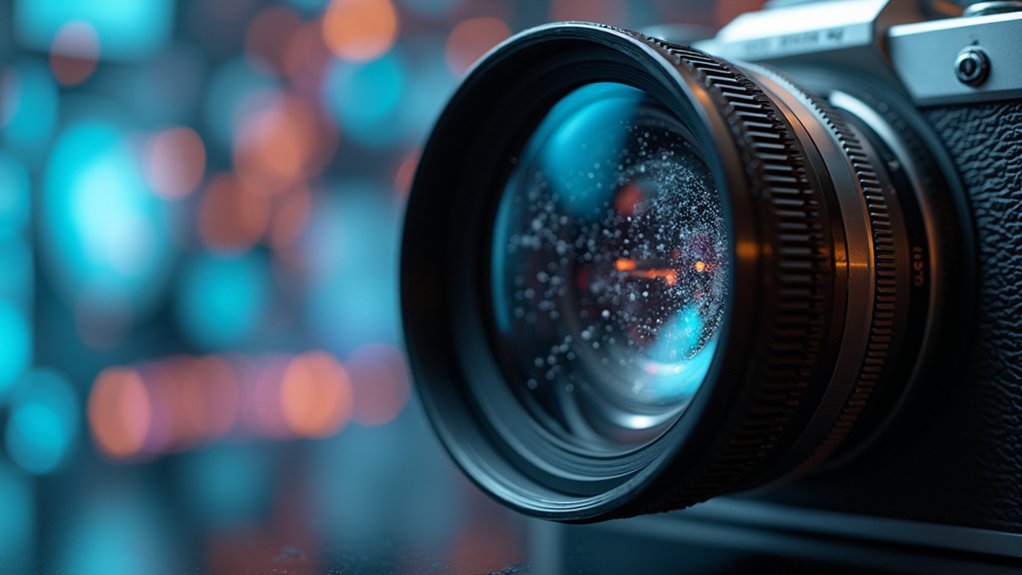



Leave a Reply